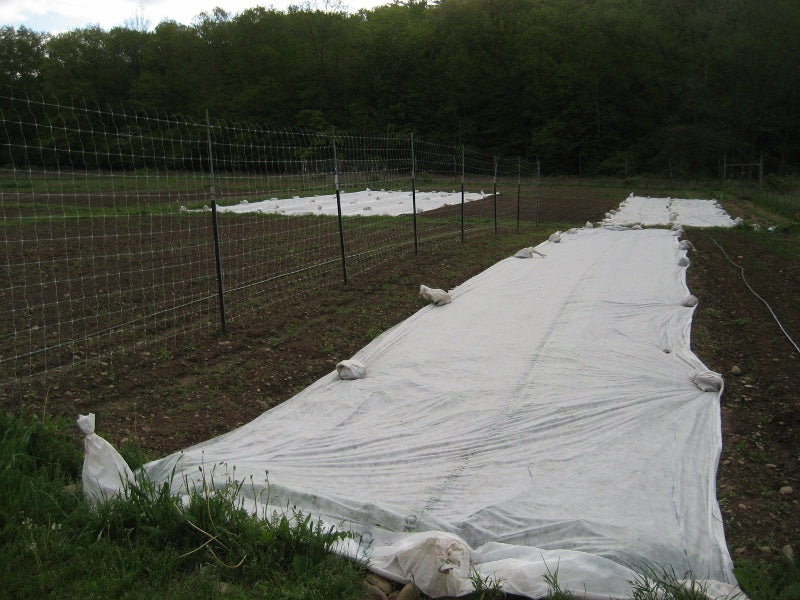This time of year in our neck of the woods we're starting to harden off seedlings. That means we're taking our coddled young plants that have been protected up until now and gradually exposing them to the elements. We want them to be used to wind, direct sun, and some chills before we plant them firmly in the ground. Other plants are already rooted. Our peas are up along with spinach, asian greens, and poppies. It's always inspiring to see tender green new growth, it reminds us of the harvest that are just around the corner. But it can also be worrisome. We can still experience frosts in May that can damage young plants.
It's pretty easy to figure out ways to protect seedlings in flats because they are transportable. They can be brought indoors, put in a hoophouse, or covered with simple wire hoops and fabric. If you're expecting temperatures below 35 degrees it's smart to protect all young seedlings. The seedlings that are the most susceptible to frost, even light frost, are tomatoes, peppers, eggplants, many flowers, and cucurbits. The flowers on fruit trees (and shrubs, and plants) can also be damanged by frost. (We draped fabric over our hardy kiwis and strawberry patch last night.) Once they're done flowering, they'll be fine.
But what about the plants that can't be moved? Don't go digging up your plants! They are better off undisturbed, and may not need as much protection as you think. There's good parenting, and then there's helicopter parenting. Especially when your plants reach their adolescent stages, they can deal with a lot more worldly pressures than we give them credit for.
Plants that don't need overprotective parenting once they have their true leaves include: Lettuce, Spinach, Peas, most Brassicas (though cabbages and broccolis that have just recently been set out will need protection), Asian Greens, Carrots, Beets, Parsnips, Radishes, Parsley, Cilantro, and all Perennial Herbs. They've all got the skills they need to survive one or two nights of light frost. Most can even handle a deeper freeze, though if the weather has been mild for a long stretch, it is wise to cover them up: once plants emerge from their winter "protective" mode, they are more susceptible to frost injury.
As ever, no need to freak out when facing unpredictable weather patterns. Do what you can to take care of your herbaceous brood without being an overprotective parent. A little chill will help them grow stronger and mature into healthy, happy, productive plants.







